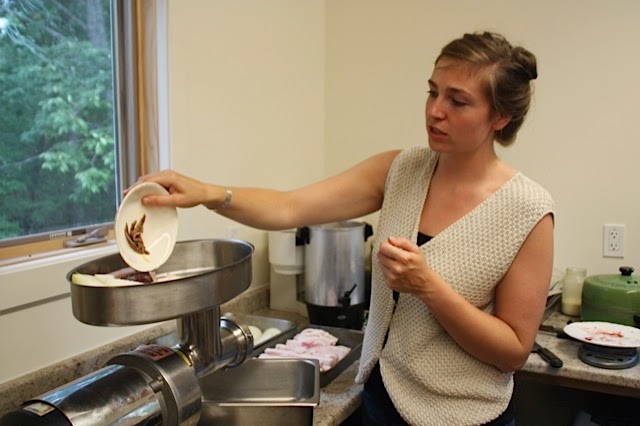When the moments that move us become memories, we become
transformed. It is on the backbone of these shared narratives that we then imagine our life stories into being. The magic of the
experience of Aragosta at The Barn at David’s Folly Farm has been for a month
now carefully wrapped up in my back pocket. Spring has flung us all forward
with a wave of her wand and busy activity has inundated our lives. The story of
Aragosta at the Barn still resonates.







The $4,750 collected from this event was only a small part
of what was raised throughout the night. For one, there was an encore of raised
glasses and cheering, filled by Montroig Cava from the Blue Hill Wineshop, infusing
renewed hope and high spirits into the food security initiatives of the Blue Hill
region. Our community of non-profits and community members became intricately
linked to the issues of food insecurity, as our palates shared in the bountiful culinary genius of Chef Devin Finigan of Aragosta and her amazing team. Living the contradiction of the experience of bounty as it relates to hunger was perhaps the most thought provoking aspect of this dinner experience.

The Tree of Life Food Pantry, Healthy Peninsula, Healthy
Acadia, and UMaine Cooperative Extension all collaborated in the organization
of the event, and the Gleaning Initiative (a program of Healthy Acadia in
partnership with UMaine Cooperative Extension) took on a lead coordinating role
together with Tree of Life. But it was through Aragosta’s deep connection to
local food providers and Devin’s role as board member of the Island Culinary
and Ecological Center (ICEC) that we were able to inspire such generous
donations, and bring such a wonderful crowd together.
As we backtrack through the story of Aragosta at the Barn,
it is precisely The Barn at David’s Folly Farm that I would like to thank the
most. John and Emma’s vision of wanting more of their locally raised
animals in the food pantry, and their commitment to filling more local people’s
freezers with good sources of local protein, had Rick Traub of Tree of Life,
and myself, a gleaner and pantry board member, convinced from day one. The Pantry's Pig Idea brings up an important question that our community of farmers, butchers,
processors, teachers, chefs, representatives, community members, volunteers,
folks in need, summer residents, fisherwomen, pastors, store owners, service
providers must come together around, to find a way, or many ways, to make local food economies thrive again,
and again, and again, for years to come?
Of course the vegetables of the Magic Food Bus and the Double Your Benefits Program at the Blue Hill Farmer's Market are not forgotten, but isn't it
time we went whole hog!?
A special thank you to William Altman for all the photos that are shared here, and last but not least a very special thank you to Eric Horschak for the bountiful music played during the event.

.JPG)






















